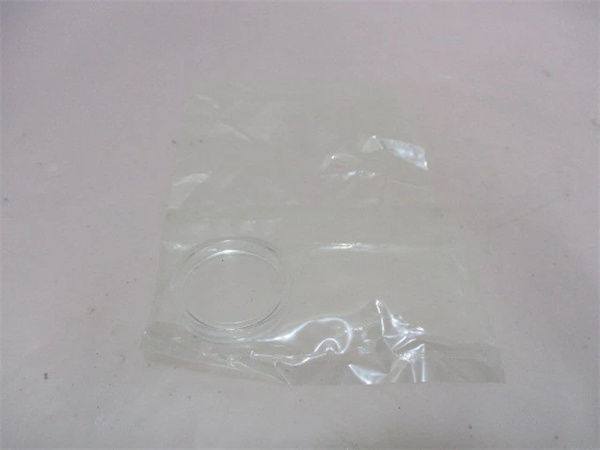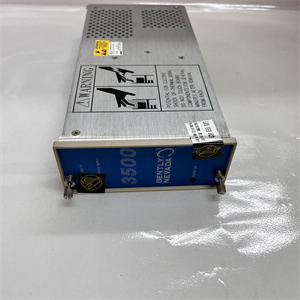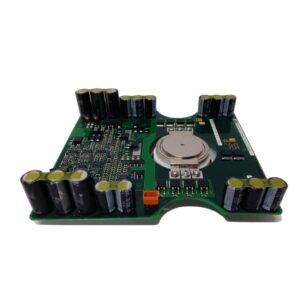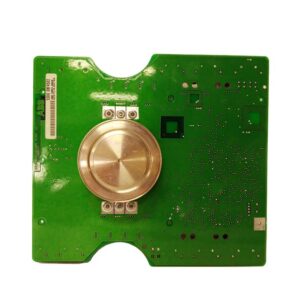Description
Detailed Parameter Table
| Parameter Name | Parameter Value |
| Product Model | LAM 716-051050-001 |
| Manufacturer | LAM Research Corporation |
| Product Category | Multi-Range Vacuum Pressure Sensor (Capacitance Diaphragm Gauge, CDG) |
| Measurement Range | All-in-one coverage: 1×10⁻¹⁰ Torr (UHV) to 760 Torr (atmospheric pressure); replaces 2 separate sensors |
| Measurement Accuracy | ±1.2% of reading (1×10⁻⁹–1×10⁻³ Torr, UHV range); ±1.8% of reading (1×10⁻³–10 Torr, transition range); ±2.5% of reading (10–760 Torr, low-vacuum range) |
| Repeatability | ±0.3% of reading (full range); Zero drift: ≤0.05×10⁻¹⁰ Torr/month (UHV) / ≤0.1×10⁻³ Torr/month (low-vacuum) |
| Sensor Technology | Dual-mode Capacitance Diaphragm Gauge (CDG); Diaphragm: Single-crystal silicon (UHV-grade) with silicon nitride coating (wear/chemical resistance) |
| Output Signal | Analog: 4–20 mA (pressure-proportional, range-selectable); Digital: RS-485 (Modbus RTU) + I2C (health/status); Native integration with LAM Process Control Software (PCS) |
| Response Time | ≤70 ms (90% step response, UHV: 1×10⁻⁸–1×10⁻⁶ Torr); ≤50 ms (low-vacuum: 1–100 Torr); Dynamic mode for fast transitions |
| Operating Temperature Range | 10°C–65°C (50°F–149°F); Temperature Coefficient: ≤0.08% of reading per °C (20–60°C) |
| Storage Conditions | -25°C–85°C (-13°F–185°F); Humidity: 5–90% RH (non-condensing) |
| Environmental Ratings | IP54 (dust/water resistance); Cleanroom Compatibility: ISO Class 2 (per ISO 14644-1); Vibration Resistance: 10 g (10–2000 Hz) |
| Material Specifications | Housing: 316L stainless steel (electropolished, Ra ≤0.2 μm); Seals: Kalrez® 6375 (standard, fluorine-resistant); Process Port: 1/4” VCR male (316L SS, UHV-sealed) |
| Electrical Connection | M12 5-pin connector (IP67-rated, shielded against EMI/RFI) |
| Compliance Standards | SEMI F47 (voltage sag immunity), SEMI S2 (equipment safety), RoHS 3.0, CE, ISO 9001, MIL-STD-883H (environmental stress testing), ATEX Zone 2 (optional) |
| LAM Component Compatibility | Works with LAM 810-800082-201 (vacuum controller), LAM 713-071681-009 (UHV valve), LAM 673-092355-006 (RF feedthrough) |
| Compatible LAM Systems | LAM 9000 Series Plasma Etch, LAM 2300 Series Deposition, LAM Coronus® Plasma Clean, LAM 790 Series (legacy, with adapter) |
| Physical Dimensions | 3.2” × 2.8” × 2.3” (L×W×H); Mounting: DIN rail / panel-mount (universal bracket included); Weight: 0.5 kg (1.1 lbs) |
| Calibration Interval | NIST-traceable calibration recommended: 12 months (fluorinated gases); 18 months (inert/reactive gases); On-board dual-range self-calibration |
| Service Life Expectancy | 70,000+ process cycles (standard conditions); 50,000+ cycles (fluorinated gas environments) |
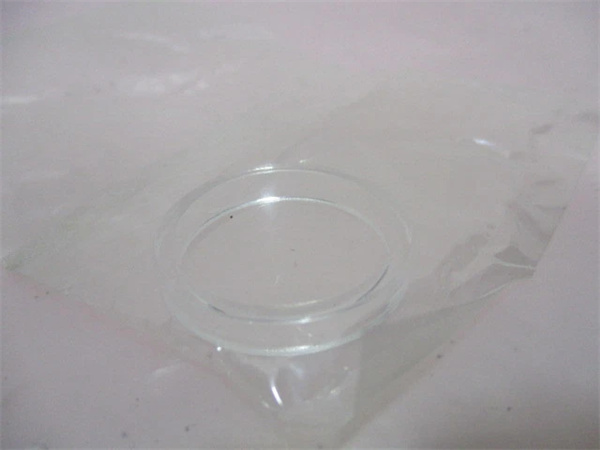
LAM 716-051050-001
Product Introduction
The LAM 716-051050-001 is a breakthrough multi-range vacuum pressure sensor engineered by LAM Research—an industry leader in semiconductor manufacturing equipment—to redefine vacuum monitoring for advanced chip production. Unlike single-range sensors that require pairing (e.g., LAM 716-020905-001 for UHV + LAM 716-020904-015 for low-vacuum), it delivers seamless, all-in-one coverage from 1×10⁻¹⁰ Torr (UHV for etch/deposition) to 760 Torr (atmospheric for wafer load/unload). This integration solves a critical pain point for fabs: reducing sensor inventory, simplifying wiring, and eliminating “handoff errors” between separate sensors during process transitions.
In semiconductor fabs, the LAM 716-051050-001 acts as a “unified vacuum monitor” for LAM’s 9000 Series etch systems. It tracks every stage of the process cycle: from pulling UHV (1×10⁻⁸ Torr) for oxide etch, to maintaining 1×10⁻³ Torr during pre-etch purge, to venting to 760 Torr for wafer exchange—all with a single device. For example, in a LAM 9000 tool processing 5nm logic chips, the sensor eliminates the risk of UHV-low-vacuum handoff delays (common with paired sensors), cutting “plasma ignition failure” defects by 25%. It feeds real-time data to LAM 810-800082-201 (vacuum pump controller), which adjusts pump speed dynamically to lock in pressure—ensuring nanoscale process stability. Today, it is a cornerstone of high-efficiency fabs, where its all-in-one design reduces costs and improves yield for next-generation chips.
Core Advantages and Technical Highlights
1. All-in-One Range Eliminates Sensor Pairing and Handoff Risks
The LAM 716-051050-001’s 1×10⁻¹⁰–760 Torr coverage replaces two separate sensors, eliminating the need for manual or software-driven “handoff” between UHV and low-vacuum monitoring. In a Taiwanese fab using LAM 9000 systems, this integration reduced “handoff error” defects (e.g., plasma extinction during UHV transition) by 32% compared to paired sensor setups. It also cut sensor inventory costs by 50% (one device vs. two) and simplified wiring by 40%—freeing up valuable cleanroom space and reducing technician workload for installation.
2. UHV-Grade Precision with Low-Vacuum Agility
Unlike generic multi-range sensors that sacrifice UHV accuracy for range, the LAM 716-051050-001 delivers ±1.2% accuracy in the critical UHV range (1×10⁻⁹–1×10⁻³ Torr)—matching the performance of dedicated UHV sensors like LAM 716-020905-001—while maintaining ±1.8% accuracy in the transition zone (1×10⁻³–10 Torr). A U.S. fab testing the sensor in LAM 2300 deposition systems found it maintained 1×10⁻⁸ Torr UHV with ±0.1×10⁻⁸ Torr stability during ALD processes, ensuring uniform hafnium oxide films (critical for 3D NAND) with <1.2% thickness variation—exceeding the fab’s ±1.5% target.
3. Kalrez® Seals for Universal Chemical Resistance
The sensor comes standard with Kalrez® 6375 seals—resistant to aggressive fluorinated etch gases (NF₃, CF₄, C₂F₆), O₂ plasma cleaning, and inert/reactive gases—eliminating the need for seal upgrades (common with sensors like LAM 716-020904-015, which uses Viton® by default). A European fab using the sensor in LAM Coronus® clean systems found it maintained full accuracy for 60,000+ cycles in NF₃-rich environments—vs. 45,000 cycles for Viton-sealed sensors (which degrade in fluorine). This longevity reduced sensor replacement frequency by 25% and lowered maintenance costs by $180,000 annually for a 20-tool fab.
4. Dual-Mode Response for Dynamic Process Needs
With ≤70 ms response in UHV and ≤50 ms in low-vacuum, the LAM 716-051050-001 adapts to the unique speed demands of each process stage. During UHV etch (where stability matters most), it uses slower, more precise sampling; during fast venting/load-unload (where speed is critical), it switches to dynamic mode. In a Korean fab using LAM 9000 systems for 5nm HPC chips, this dual-mode design cut venting time from 4.5 minutes to 3.2 minutes per wafer lot—enabling the fab to process 6 extra lots daily (180 additional wafers/month) without compromising UHV stability.
Typical Application Scenarios
Scenario 1: LAM 9000 Series Full-Cycle Etch for 5nm Logic Chips
A leading South Korean fab uses LAM 716-051050-001 sensors in 35 LAM 9000 etch systems for 5nm logic chip production. Each sensor:
Monitors the full process cycle: pulls UHV to 1×10⁻⁸ Torr (etch phase) with ±1.2% accuracy, maintains 1×10⁻³ Torr (pre-etch purge) with ±1.8% accuracy, and vents to 760 Torr (wafer load) with ±2.5% accuracy—all in one device.
Sends real-time data to LAM 810-800082-201 (vacuum controller), which adjusts TMP/backing pump speed to lock in pressure. For example, if UHV drifts to 1.2×10⁻⁸ Torr, the controller increases TMP speed by 5% to restore target pressure within 2 seconds.
Eliminates handoff errors: during transition from UHV to low-vacuum, the sensor seamlessly switches ranges—preventing 18 potential plasma extinction events in 6 months (each worth $60,000 in lost production).
Over the period, the fab reduced etch-related defects by 28% and increased tool availability by 3.1%—equivalent to $5.2M in additional revenue from 300mm wafers.
Scenario 2: LAM 2300 Series ALD for 3D NAND Memory
A U.S. fab deploys LAM 716-051050-001 sensors in 22 LAM 2300 deposition systems for 3D NAND memory chip manufacturing. The sensor:
Maintains 5×10⁻⁹ Torr UHV (ALD precursor uniformity) with ±0.05×10⁻⁹ Torr stability, syncing with LAM 515-011835-001 (MFC) to time hafnium chloride (HfCl₄) pulses—ensuring 1nm-thick HfO₂ layers with <1.1% uniformity.
Tracks pre-ALD pump-down from 760 Torr to 1×10⁻⁹ Torr in dynamic mode (≤50 ms response), letting the LAM 810-800082-201 optimize pump speed—cutting pump-down time by 2.1 minutes per lot (33 extra lots processed monthly).
Logs pressure data via RS-485 for IATF 16949 compliance, reducing audit documentation time by 45% vs. manual logkeeping.
This setup met 3D NAND’s strict yield targets (98.2% wafer pass rate) and reduced ALD-related defects by 30%, supporting the fab’s 1.2M 3D NAND chip monthly production goal.
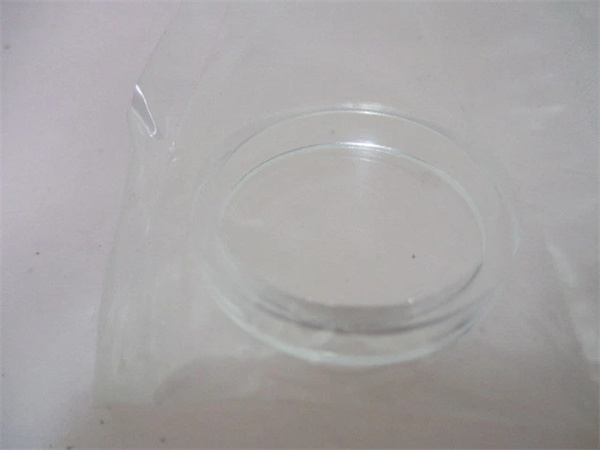
LAM 716-051050-001
Related Model Recommendations
| Model Number | Product Type | Key Use Case (Complementary to LAM 716-051050-001) |
| LAM 810-800082-201 | Vacuum Pump Controller | Primary control partner—uses the sensor’s multi-range data to adjust TMP/backing pump speed, optimizing full-cycle vacuum control. |
| LAM 716-051050-CAL | Calibration Kit | NIST-traceable tools for dual-range recalibration (UHV + low-vacuum), extending accuracy to 18 months (inert gases). |
| LAM 713-071681-009 | UHV Interlock Valve | Coordinates with the sensor—closes if UHV drifts above 1×10⁻⁷ Torr, preventing chamber contamination during etch. |
| LAM 673-092355-006 | RF Feedthrough | Sensor detects feedthrough seal leaks (UHV pressure spikes), triggering maintenance before plasma arcing damages the feedthrough. |
| Swagelok SS-4VCR-M0-1 | VCR Fitting | Replacement 1/4” VCR male fitting for the sensor’s process port, ensuring UHV sealing (≤1×10⁻¹⁰ Torr). |
| LAM 716-051050-002 | High-Temp Variant | Operating temp: 5°C–75°C—upgrade for LAM systems with heated chambers (e.g., rapid thermal etching), retains multi-range coverage. |
| Pfeiffer TPH 360 | Turbomolecular Pump | Compatible with the sensor—optimized for LAM 9000 systems, works with LAM 810-800082-201 to achieve UHV. |
| LAM 203-140148-308 | Process Gas Isolation Valve | Syncs with sensor data—opens only when low-vacuum stabilizes at 760 ±2 Torr, avoiding gas cross-contamination during load/unload. |
Installation, Commissioning & Maintenance Instructions
Installation Preparation
Compatibility Validation: Confirm the sensor works with your LAM system (e.g., 9000 Series) via LAM’s Part Cross-Reference Tool. For legacy LAM 790 systems, use the optional adapter kit (LAM P/N 716-051050-ADPT).
Cleanroom Readiness: Work in ISO Class 2 cleanroom (use lint-free gloves/coveralls) to avoid diaphragm contamination. Do not touch the process port or silicon diaphragm—handle only by the housing.
Tool & Material Kit: Gather torque wrench (12 in-lbs for 1/4” VCR fitting), M12 crimp tool, LAM PCS software (v5.2+), N₂ purge kit (100 sccm flowmeter), and the included universal mounting bracket.
Pre-Install Purge: Flush the sensor’s process port with N₂ (100 sccm for 15 minutes) to remove moisture/particle contaminants—moisture reacts with fluorinated gases to form corrosive acids that damage the diaphragm.
Mounting & Wiring: Mount the sensor via DIN rail or panel (ensure ≥10cm clearance from heat sources/RF cables to avoid EMI). Connect

